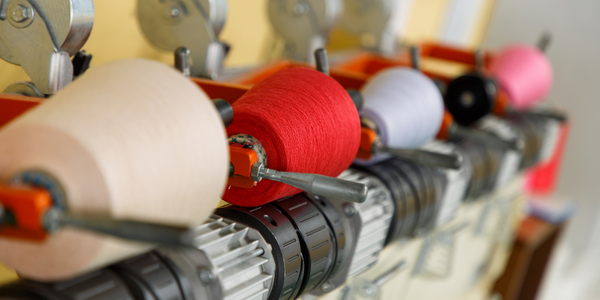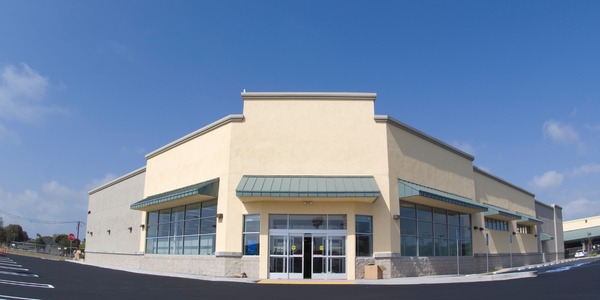Technology Category
- Platform as a Service (PaaS) - Application Development Platforms
Applicable Industries
- Apparel
Applicable Functions
- Logistics & Transportation
Use Cases
- Supply Chain Visibility
Services
- System Integration
About The Customer
The Better Cotton Initiative (BCI) is a global not-for-profit organization and the largest cotton sustainability program in the world. BCI exists to make global cotton production better for the people who produce it, better for the environment it grows in, and better for the sector’s future. BCI aims to transform cotton production worldwide by developing Better Cotton as a sustainable mainstream commodity. To make this vision a reality, BCI works with a diverse range of stakeholders across the cotton supply chain to promote measurable and continuing improvements for the environment, farming communities, and the economies of cotton-producing areas.
The Challenge
The Better Cotton Initiative (BCI), established in 2009 by organizations such as Adidas, H&M, IKEA, Oxfam, and WWF, was created to enhance the livelihood and economic development in cotton-producing regions, reduce the environmental impact of cotton production, and secure the future of the sector. The initiative was designed to address issues such as harmful crop protection practices, water misuse, declining soil fertility, and unethical practices like child or forced labor. To achieve these goals, BCI needed to define a more sustainable way of growing cotton and train farmers to adopt these techniques. In 2013, 680,000 farmers produced 905,000 metric tonnes of Better Cotton. The goal was to increase these numbers to 5 million and 8.2 million respectively by 2020. However, ensuring that retailers and brands could confidently make claims about Better Cotton was a challenge.
The Solution
To address this challenge, BCI introduced Chain of Custody requirements for the supply chain and developed a tracking and tracing system, called the Better Cotton Platform, powered by ChainPoint. This system covers the supply chain from the ginner to the retailer. It is a combination of mass-balance administration and the tracing of so-called “Better Cotton Claim Units” (BCCUs). In a mass-balance system, the volumes of sustainable product are tracked from ginners to the yarn spinners in ChainPoint. The Better Cotton Platform ensures that a trader cannot sell more Better Cotton to yarn spinners than he acquired from Better Cotton ginners. At the yarn spinner, each kilo of Better Cotton is then swapped into a BCCU. As the Better Cotton continues its journey through the supply chain as yarn, cloth, and the final product, it is accompanied by these BCCUs. At the end, a retailer can trace the BCCUs back to the yarn spinner that issued them, by using the Better Cotton Platform.
Operational Impact
Quantitative Benefit

Case Study missing?
Start adding your own!
Register with your work email and create a new case study profile for your business.
Related Case Studies.

Case Study
Fire Alarm System and Remote Monitoring Sytem
Fire alarm systems are essential in providing an early warning in the event of fire. They help to save lives and protect property whilst also fulfilling the needs of insurance companies and government departments.Fire alarm systems typically consist of several inter-linked components, such as smoke detectors, heat detector, carbon monoxide, manual call points, sounders, alarm and buzzer. The fire alarm system should give immediate information in order to prevent the fire spread and protect live and property.To get maximum protection a shoe manufacturer in Indonesia opted for a new fire alarm system to monitor 13 production sites spread over 160 hectars. Although the company had an existing fire alarm system, it could not be monitored remotely.It was essential that the new system would be able to be monitored from a central control room. It needed to be able to connect to the existing smoke detector and manual call point. Information should be easily collected and passed on to the Supervisory Control and Data Acquisition (SCADA) system. Furthermore, the system should have several features such as alarm management, auto reporting, being connected to many client computers without additional cost, and run 24/7 without fails. The company also needed a system which could be implemented without changing the architecture of the existing fire alarm system.

Case Study
IoT Applications and Upgrades in Textile Plant
At any given time, the textile company’s manufacturing facility has up to 2,000 textile carts in use. These carts are pushed from room to room, carrying materials or semi-finished products. Previously, a paper with a hand-written description was attached to each cart. This traditional method of processing made product tracking extremely difficult. Additionally, making sure that every cart of materials or semi-finished products went to its correct processing work station was also a problem. Therefore, the company desired an intelligent solution for tracking assets at their factories. They also wanted a solution that would help them collect process data so they could improve their manufacturing efficiency.

Case Study
Retailer Uses RFID Scanner to Improve Efficiency
Patrizia Pepe wished to improve the logistics of their warehouse: accepting incoming goods from their production sites, movement of items throughout
the warehouse, and packaging of goods for distribution to the retail locations. They initially tried to use barcodes for this function. Because barcodes must be individually scanned within a line-of-sight, the acceptance of goods coming into the warehouse was too time consuming. Working with the University of Florence, Patrizia Pepe instituted a five-month pilot project beginning in August of 2009 to test the validity of an RFID solution. The pilot involved tagging of about 60,000 items for the second seasonal collection, and convinced the company to move forward with tagging all items.

Case Study
Monitoring and Controlling Automatic Mixing and Dispensing Machines
As technology advances, textile manufacturing has been transformed from a labor-intensive to a partially or fully automated industry. Automation is significant in all segments of textile production - from spinning to printing, and textile machinery manufacturers are constantly searching for new technologies and automation processes will increase the productivity of their machines. The color paste mixing and dispensing machine is an essential part of the printing and dyeing process. With the advantage of automatically computerized controls and database management, the system can significantly improve its dispensing precision, working efficiency and production quality as well as reducing material consumption.









